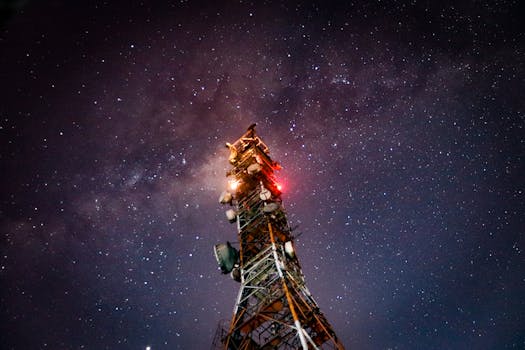
The Rise of Mega-Constellations: Latest Updates in Satellite Telecommunications
The Rise of Mega-Constellations: Latest Updates in Satellite Telecommunications. The space industry is witnessing a significant transformation with the emergence of mega-constellations, a network of thousands of satellites orbiting the Earth to provide global internet coverage. This revolutionary technology is poised to transform the way we communicate, access information, and navigate our daily lives.
Introduction to Mega-Constellations

Mega-constellations are a type of satellite constellation that consists of a large number of satellites, typically in the thousands, working together to provide a continuous and uninterrupted service. These satellites are designed to operate in low Earth orbit (LEO), approximately 500-2000 kilometers above the Earth’s surface. The primary goal of mega-constellations is to provide global internet coverage, bridging the digital divide and connecting remote and underserved communities.
The concept of mega-constellations has been around for decades, but recent advancements in space technology have made it possible to launch and operate such large-scale satellite systems. Companies like SpaceX, Amazon’s Kuiper Systems, and OneWeb are leading the charge, with each planning to launch thousands of satellites in the coming years.
Benefits of Mega-Constellations

The benefits of mega-constellations are numerous and far-reaching. One of the most significant advantages is the provision of global internet coverage, which will enable people in remote and underserved areas to access the internet and connect with the rest of the world. This will have a profound impact on education, healthcare, and economic development in these regions.
Mega-constellations will also provide a new level of redundancy and resilience in satellite communications, reducing the risk of service outages and ensuring continuous connectivity. Additionally, the use of advanced satellite technology will enable faster data transfer rates, lower latency, and improved overall network performance.
Challenges and Concerns

While the benefits of mega-constellations are significant, there are also several challenges and concerns that need to be addressed. One of the primary concerns is the risk of space debris, as the launch of thousands of satellites will increase the amount of debris in Earth’s orbit. This could pose a significant threat to the safety of spacecraft and satellites, as well as the environment.
Another challenge is the issue of spectrum allocation, as the use of mega-constellations will require a significant amount of radio frequency spectrum. This could lead to conflicts with other satellite operators and users of the spectrum, and will require careful management and regulation.
Finally, there are also concerns about the potential impact of mega-constellations on the environment, including the risk of interference with astronomical observations and the potential for satellites to contribute to climate change.
Conclusion

The rise of mega-constellations is a significant development in the space industry, with the potential to transform the way we communicate and access information. While there are challenges and concerns that need to be addressed, the benefits of mega-constellations are clear, and it is likely that this technology will play a major role in shaping the future of satellite telecommunications.
See more:





